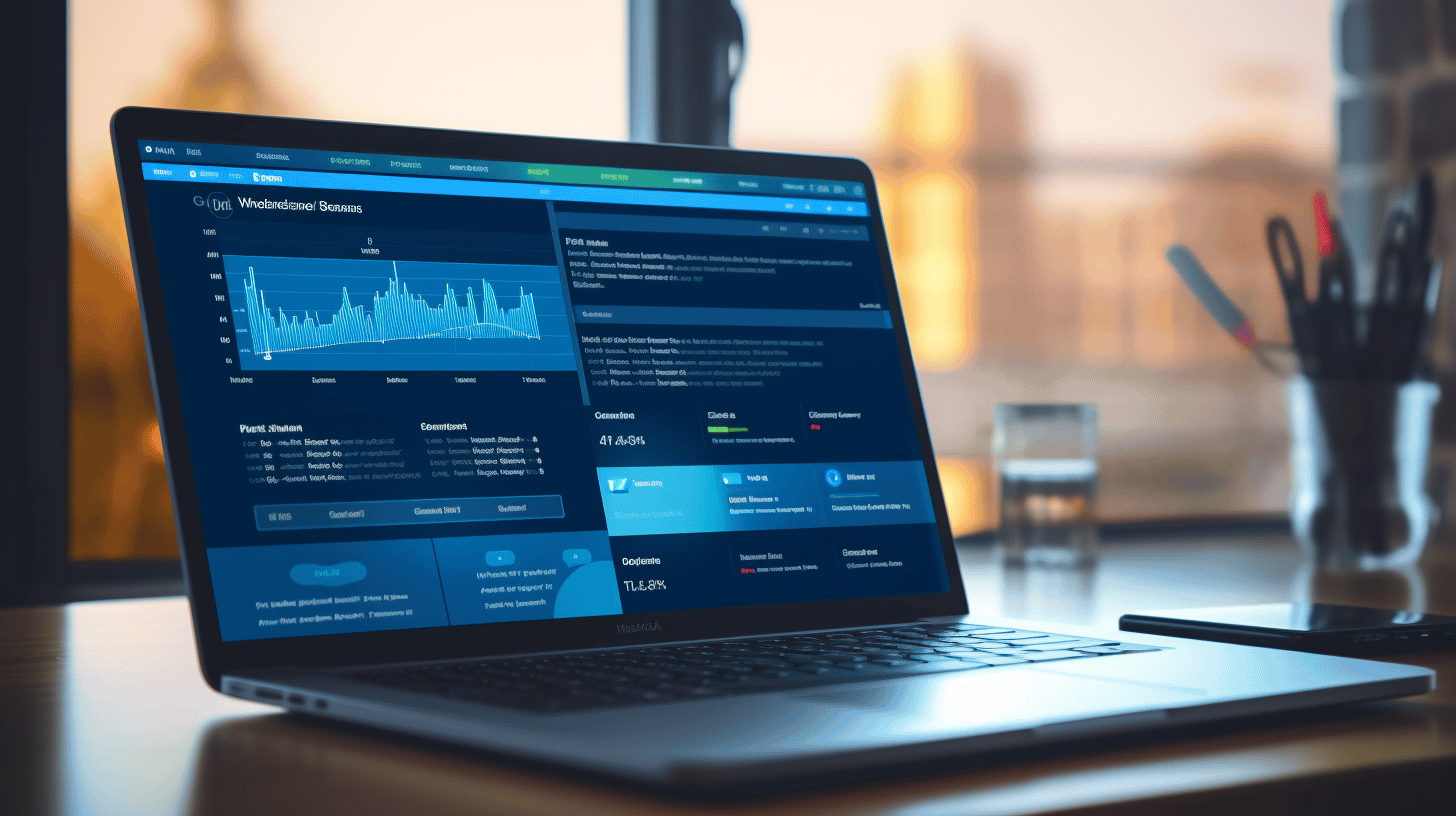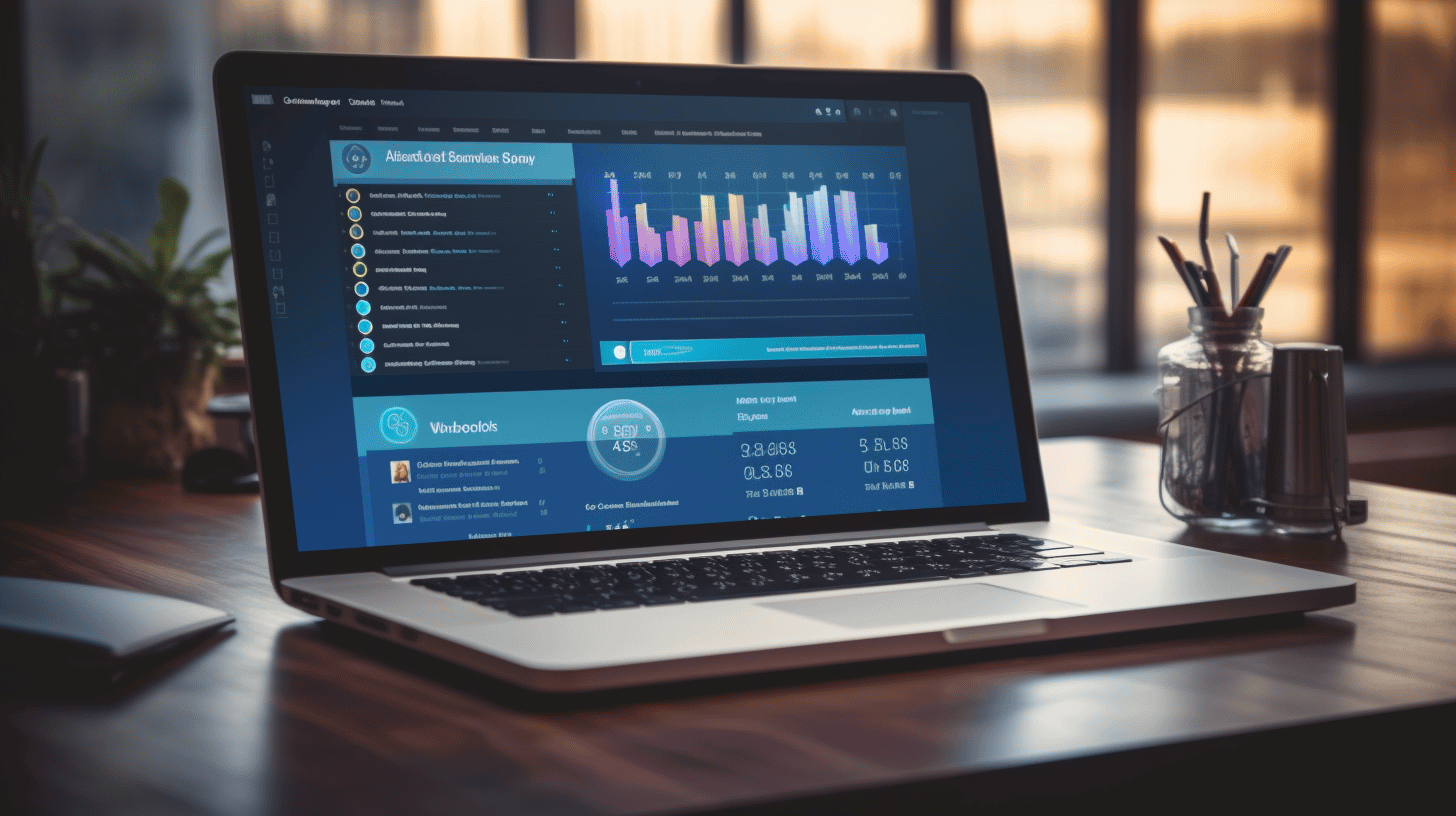在當今的數位時代,擁有一個高效能的網站對於線上成功至關重要。無論您擁有個人部落格還是商業網站,網站的速度和效能都會決定用戶體驗的好壞。頁面載入緩慢不僅會讓訪客感到沮喪,還會對您的搜尋引擎排名產生負面影響。
幸運的是,如果您有一個 WordPress 網站,那麼有一些行之有效的策略可以顯著提高其效能。從優化圖片到管理插件,您可以採用各種技術來確保您的網站快速且有效率地載入。
在本文中,我們將深入探討 WordPress 網站效能優化的世界。我們將探討網站速度的重要性、影響效能的因素以及如何有效地衡量您網站的效能。我們還將介紹加快載入時間、增強資料庫效能的優化技術以及 WordPress 主題和外掛程式在網站效能中的作用。此外,我們將討論不同的託管解決方案以及定期監控您網站效能的重要性。
因此,如果您準備好將您的 WordPress 網站提升到一個新的水平並為您的訪客提供無縫的瀏覽體驗,讓我們深入了解 WordPress 網站效能優化的世界!
了解網站效能
🌐 您是否曾經造訪過需要長時間載入的網站? 🐢 這可能令人沮喪,對吧?嗯,你並不孤單。載入速度慢會嚴重影響使用者體驗,最終影響網站的成功。在當今快節奏的數位世界中,人們的注意力持續時間比以往任何時候都短,因此網站提供流暢、快速的瀏覽體驗至關重要。
網站速度的重要性
⏰ 網站速度對於吸引和留住用戶的注意力起著至關重要的作用。這就是為什麼優先考慮網站效能至關重要:
- 使用者體驗:現今的使用者期望獲得即時滿足。如果網站載入時間過長,他們很可能會放棄網站並尋找其他網站。事實上,研究表明,加載時間延遲一秒鐘就會導致轉換率降低 7%。速度很重要!
- 搜尋引擎排名:您知道網站速度直接影響搜尋引擎排名嗎?像 Google 這樣的搜尋引擎將網站效能視為排名因素之一。速度慢的網站可能會被埋沒在搜尋引擎結果中,而載入速度快的網站則更有可能排名靠前。
- 行動最佳化:隨著行動裝置的使用日益增多,優化您的網站以獲得行動效能至關重要。網站載入緩慢對於行動用戶來說尤其令人沮喪,導致高跳出率和潛在客戶流失。
影響網站效能的因素
⚙️ 有幾個因素會影響網站的效能。讓我們來看看導致載入時間變慢的一些重要因素:
- 伺服器效能:託管伺服器的品質和可靠性會影響網站速度。確保您選擇信譽良好且伺服器響應時間快速的託管服務提供者。
- 檔案大小和格式:較大的檔案(例如高解析度圖片或影片)會減慢網站的載入時間。壓縮影像和優化檔案格式可以顯著提高效能。
- 快取:快取涉及將網站的某些元素本地儲存在使用者的裝置上,以便隨後更快地進行存取。利用快取技術可以減少伺服器負載並提高整體網站速度。
如何衡量網站效能
📈 如果您想知道如何衡量您網站的效能,請不要擔心!有幾種工具可以幫助您分析和優化網站速度:
- 谷歌頁面速度洞察:這個免費工具可以提供有關您的網站在行動和桌面裝置上的表現的寶貴見解。 PageSpeed Insights 提供改善建議,讓您提升網站的速度和使用者體驗。
- GTMetrix:GTMetrix 是另一個出色的工具,可分析並提供有關您網站效能的詳細報告。它提供有關頁面載入時間、檔案大小的見解,並提出優化建議以加快網站速度。
- 網頁測試:使用 WebPageTest,您可以從世界各地和不同的瀏覽器測試您網站的速度。它提供了全面的分析,包括頁面上每個元素的載入時間細目。
準備好採取行動並提高您的 WordPress 網站效能了嗎?請參閱此實用指南,了解如何 提高您的 WordPress 效能。實施提到的技巧和竅門可以幫助提高您網站的速度、效能和使用者滿意度。
總之,網站效能是為使用者創造無縫瀏覽體驗的關鍵面向。快速的網站不僅能吸引用戶的注意,還能提高搜尋引擎的排名。透過了解影響網站效能的因素並使用相關工具進行衡量和優化,您可以確保您的網站為所有訪客提供快速愉快的瀏覽體驗。
加快載入時間的優化技術
在當今快節奏的數位世界中,使用者的注意力持續時間越來越短,網站載入時間對於使用者體驗和整體網站效能起著至關重要的作用。網站加載緩慢會導致更高的跳出率和更低的轉換率,這會對您的線上形象的成功產生重大影響。為了確保您的網站快速且有效率地加載,您可以實施多種優化技術。讓我們探索一些最有效的策略來增強您網站的效能。
影像優化
圖像是任何網站的重要組成部分,因為它們有助於增強網站的視覺吸引力並吸引用戶。然而,較大且未壓縮的圖片會顯著減慢網站的載入時間。透過優化影像,您可以在視覺品質和檔案大小之間取得平衡,從而加快載入時間。以下是優化網站圖片的一些技巧:
- 壓縮:使用圖像壓縮工具或外掛程式來減小圖像的檔案大小而不影響視覺品質。
- 影像格式:根據圖片類型選擇合適的圖片格式。例如,JPEG 格式非常適合具有多種顏色的複雜影像,而 PNG 格式則非常適合具有透明度的影像。
- 影像尺寸:將圖像上傳到您的網站之前,請將其調整為正確的尺寸。避免使用 HTML 或 CSS 來調整圖片大小,因為這會影響載入時間。
JavaScript 和 CSS 壓縮
JavaScript 和 CSS 檔案對於您的網站的功能和設計至關重要。但是,大型且未優化的 JavaScript 和 CSS 檔案會減慢渲染過程並延遲網站載入時間。為了優化這些文件,您可以透過刪除不必要的空格、註解和換行符來縮小它們。最小化可減少檔案大小,從而縮短下載時間。您可以透過以下方法縮小 JavaScript 和 CSS 檔案的大小:
- 手動縮小:使用提供縮小功能的線上工具或文字編輯器手動縮小您的 JavaScript 和 CSS 檔案。
- 自動壓縮:利用自動化工具或插件,每次對文件進行更改時,它們可以自動縮小。
快取的使用
快取是一種將您網站的頁面、圖像和其他元素的副本儲存在使用者裝置上的暫存(快取)中的技術。當用戶再次造訪您的網站時,將載入快取版本,從而縮短載入時間。以下是在您的網站上實現快取的幾種方法:
- 瀏覽器快取:透過為您網站的靜態資源設定過期標頭來利用瀏覽器快取。這使得用戶的瀏覽器可以儲存您網站的快取版本,從而減少重複下載的需要。
- 伺服器端緩存:使用操作碼快取或物件快取等技術實現伺服器端緩存,以減少在伺服器上產生頁面所需的處理時間。
內容傳遞網路 (CDN)
內容傳遞網路 (CDN) 是分佈在不同地理位置的伺服器網路。 CDN 可以透過減少伺服器負載並最小化使用者和伺服器之間的距離來幫助提高網站效能。 CDN 優化網站載入時間的方法如下:
- 伺服器分佈:CDN 將網站內容分發到多個伺服器,確保從最靠近使用者的伺服器提供數據,從而減少延遲並縮短載入時間。
- 快取:CDN 也會在其伺服器上快取靜態網站內容,例如圖片和 CSS 文件,並將它們快速傳送到使用者的瀏覽器。
延遲載入
延遲載入是一種延遲載入非關鍵資源的技術,例如折疊以下的映像或螢幕上無法立即顯示的元素。透過實現延遲加載,您可以減少初始頁面加載時間並提高網站的感知速度。延遲載入的工作原理如下:
- 按需載入資源:延遲載入僅在需要時才載入資源,例如當使用者向下捲動頁面時,資源才會進入視野。
- 優先加載:延遲載入可讓您優先載入首屏內容,透過快速提供最關鍵的內容來增強使用者體驗。
透過實施這些優化技術,您可以大幅改善網站的載入時間,提供無縫且愉快的使用者體驗。不要讓緩慢的載入時間阻礙您網站的成功——立即開始實施這些策略來增強您的 WordPress 網站的效能。
查看更多關於增強 WordPress 網站效能的技巧 在这里,.
增強資料庫效能
在當今數位時代,企業嚴重依賴資料庫來儲存和存取其寶貴的資料。然而,隨著資料庫規模和複雜性的增加,確保最佳效能變得至關重要。資料庫效能緩慢會導致使用者沮喪、生產力下降,甚至喪失商機。為了避免這些問題,組織必須主動提高其資料庫效能。在本文中,我們將探討三種可以顯著提高資料庫效能的技術:定期資料庫清理、查詢監控和索引的使用。
1.定期清理資料庫
定期執行資料庫清理對於維護良好的資料庫效能至關重要。隨著時間的推移,資料庫充斥著不必要的和過時的數據,這會對效能產生負面影響。透過刪除冗餘資料、優化表結構和清除過期記錄,您可以提高查詢執行時間並最大限度地減少磁碟空間使用量。
請考慮以下進行定期資料庫清理的最佳實務:
- 識別並刪除重複記錄:重複資料不僅浪費儲存空間,而且還會減慢查詢處理速度。使用 SQL 查詢或資料庫清理工具來識別和消除重複項。
- 清除過期資料:應從資料庫中刪除不再相關或必要的資料。配置定期資料歸檔或刪除流程,確保清除過期資料。
- 最佳化表格結構:評估資料庫表的設計並進行必要的調整。這可能包括新增或刪除列、修改資料類型或重組表關係以提高查詢效能。
2. 查詢監控
監控資料庫查詢對於識別效能瓶頸和最佳化查詢執行至關重要。透過監控查詢效能,您可以找出執行緩慢的查詢,分析其執行計劃,並做出明智的決策來提高效能。以下是一些有效的查詢監控策略:
- 使用資料庫分析工具:分析工具提供查詢執行時間、資源消耗和瓶頸的見解。利用 MySQL 的效能模式或 Microsoft SQL Server 的查詢儲存等工具來監控和分析查詢效能。
- 分析查詢執行計劃:查詢執行計劃為資料庫引擎如何執行查詢提供了路線圖。透過分析這些計劃,您可以識別低效率的查詢模式、缺少的索引或次優的連接,並進行相應的最佳化。
- 監控查詢指標:專注於查詢回應時間、平均執行時間和查詢吞吐量等關鍵指標。建立基線效能指標並設定警報,當查詢超過預先定義的閾值時通知您。
3. 索引的使用
索引透過促進更快的資料檢索在提高資料庫效能方面發揮著至關重要的作用。索引是一種資料結構,它使資料庫引擎能夠更有效地定位數據,從而提高查詢速度。請考慮以下有效使用索引的技巧:
- 識別經常存取的欄位:決定查詢的 WHERE 和 JOIN 子句中經常使用哪些欄位。這些列是建立索引以加速查詢效能的主要候選列。
- 使用群集和非群集索引:群集索引物理上重新排序資料以符合索引順序,而非群集索引則會建立單獨的資料結構。了解差異並根據查詢要求選擇適當的索引類型。
- 定期更新索引統計資料:過時的索引統計資料可能會導致查詢效能不佳。定期更新索引統計數據,以確保準確的基於成本的查詢最佳化。
請記住,優化良好的資料庫有助於提高整體系統效能和客戶滿意度。透過定期清理資料庫、監控查詢和有效利用索引,您可以顯著提高資料庫的效能並提供更流暢的使用者體驗。
🔎 你知道嗎?根據 Percona 進行的一項調查,超過 75% 的受訪者表示,定期資料庫清理對其資料庫效能產生了明顯的正面影響。
WordPress 主題和外掛在網站效能中的作用
🚀 介紹:
創建高效能的網站對於任何企業或個人來說都至關重要。影響網站效能的關鍵因素之一是使用 WordPress 主題和外掛。在本文中,我們將探討 WordPress 主題和外掛在優化網站效能方面的作用,並討論一些最佳實踐,以確保流暢的使用者體驗。
選擇正確的 WordPress 主題
在網站設計和功能方面,WordPress 主題的選擇扮演著重要角色。以下是選擇主題時需要考慮的一些重要因素:
- 回應能力: 隨著行動裝置的使用越來越多,選擇響應迅速、可無縫適應不同螢幕尺寸的主題至關重要。這可確保您的網站在所有裝置上看起來都很棒並且運作完美。
- 加載速度: 網站的載入速度直接影響使用者體驗和搜尋引擎排名。選擇針對效能進行了最佳化的輕量級主題。避免使用含有過多設計元素或功能的主題,因為它們會降低網站速度。
- SEO 友善: 搜尋引擎優化 (SEO) 對於吸引自然流量到您的網站至關重要。選擇一個在建立時考慮了 SEO 最佳實踐的主題。尋找乾淨的程式碼、優化的標題和對 SEO 插件的支援等功能。
- 自訂選項: 靈活地定製網站的外觀和佈局對於創建獨特的品牌線上形象非常重要。尋找具有內建自訂選項或支援 Elementor 或 Beaver Builder 等頁面建立器的主題。
“精心選擇的 WordPress 主題可以確保響應能力、快速加載速度、SEO 優化和自訂選項,從而顯著提升您網站的效能。”
管理 WordPress 插件
WordPress 外掛程式為您的網站添加了功能和特性,讓您可以輕鬆擴展平台的核心功能。然而,明智地管理插件以保持最佳性能非常重要。以下是一些有效插件管理的技巧:
- 評估插件的必要性: 在安裝插件之前,請問自己它對您網站的功能是否必不可少。消除任何不必要的插件,因為它們會增加載入時間並可能引入安全漏洞。
- 定期更新: 過時的外掛程式可能會損害您網站的安全性和效能。確保您的外掛程式保持最新,以便從錯誤修復、新功能和安全性修補程式中受益。定期檢查和更新您的插件以保持最佳效能。
- 插件相容性: 某些外掛程式可能無法很好地協同工作或與您的主題或其他外掛程式發生衝突。在將新插件部署到您的即時網站之前,在安全的環境中測試新插件並確保相容性至關重要。
- 刪除未使用的外掛: 如果您有不再使用或不需要的插件,請將其從您的網站中刪除。這將有助於簡化您的網站的效能並降低相容性或安全性問題的風險。
「有效管理 WordPress 外掛程式對於網站效能至關重要。定期更新它們,評估其必要性,確保相容性,並刪除未使用的插件以保持最佳性能。
避免插件衝突
雖然 WordPress 外掛可以極大地增強您網站的功能,但它們有時會導致衝突,從而對效能產生負面影響。以下是一些避免插件衝突的策略:
- 全面測試: 在安裝新外掛程式之前,請在鏡像您的即時網站的暫存環境中對其進行徹底測試。這使得您可以在任何衝突或問題影響您網站的效能之前識別它們。
- 保持外掛程式和 WordPress 更新: 確保您的外掛程式和 WordPress 核心都已更新到最新版本。開發人員頻繁發布更新來解決相容性問題並解決與其他外掛程式或主題的衝突。
- 與外掛開發人員合作: 如果您遇到兩個或多個外掛程式之間的衝突,請聯絡開發人員尋求支援。他們也許能夠提供解決衝突、發布更新或推薦替代插件的指導。
- 插件相容性檢查: 在安裝新外掛程式之前,請檢查它與您的 WordPress 版本以及您正在使用的其他外掛程式的兼容性。許多插件開發人員在插件描述或其網站上表明相容性。
「避免外掛程式之間的衝突對於維護高效能網站至關重要。徹底的測試、定期更新、與開發人員的合作以及檢查插件相容性可以幫助緩解衝突並優化您網站的效能。
總結 掌握 WordPress 網站管理:
透過了解 WordPress 主題和外掛程式在網站效能中的作用,您可以做出明智的決策來建立一個快速、反應迅速且使用者友好的網站。請記住要明智地選擇主題,有效地管理插件,並避免衝突以優化您網站的效能。若要深入了解 WordPress 網站管理,請務必查看「掌握 WordPress 網站管理」以獲得全面的指南。所以,繼續努力,將您的網站效能提升到新的高度! 👍
實現最佳網站效能的託管解決方案
在當今的數位環境中,擁有一個高效能的網站對於各種規模的企業來說都至關重要。網站載入緩慢會導致訪客感到沮喪、跳出率增加,最終導致收入損失。這就是為什麼選擇正確的託管解決方案對於確保最佳網站效能至關重要。
共享與專用託管
說到託管選項,兩個流行的選擇是共享託管和專用託管。讓我們仔細看看每一個:
- 共享主機:透過共享主機,多個網站可以託管在一台伺服器上。這意味著 CPU、RAM 和儲存等資源在該伺服器上的所有網站之間共用。雖然共享主機通常較便宜,但它可能無法提供與專用主機相同等級的效能,尤其是在伺服器上的其他網站流量較大的情況下。
- 專用主機:另一方面,專用託管為單一網站提供整台伺服器的專用使用權。這意味著您可以完全控制和存取所有伺服器的資源。專用託管提供卓越的效能、可擴充性和安全性。然而,與共享主機相比,它的價格也更高。
在共享託管和專用託管之間進行選擇時,評估您網站的需求、流量和預期成長至關重要。如果您的網站持續流量較高、需要更多的儲存和處理能力,或者需要增強的安全措施,那麼專用託管可能是您的最佳選擇。
WordPress 託管
對於使用 WordPress 作為網站平台的企業來說,託管 WordPress 主機是值得考慮的絕佳選擇。託管式 WordPress 主機專門針對 WordPress 網站進行了最佳化,並具有以下幾個優點:
- 效能最佳化:託管的 WordPress 主機提供者通常擁有專門為 WordPress 配置的伺服器,從而縮短了載入時間並提高了網站效能。
- 自動更新:託管 WordPress 主機的一大優點是託管服務提供者會為您處理更新。這包括 WordPress 核心、主題和外掛的更新,確保您的網站保持安全和最新。
- 增強安全性:託管的 WordPress 託管服務提供者通常會採取強大的安全措施來保護您的網站免受惡意軟體、病毒和其他安全威脅。
- 專家支持:如果您遇到任何問題或需要有關 WordPress 網站的幫助,託管的 WordPress 託管服務提供者通常會提供 WordPress 專家的專門支持,他們可以幫助您快速有效地解決任何問題。
雲端託管
另一種因其效能優勢而越來越受歡迎的託管解決方案是雲端託管。雲端託管利用跨多個資料中心的互連伺服器網路來按需提供資源。以下是雲端託管的一些優點:
- 可擴展性:雲端託管可讓您根據網站的需求輕鬆擴大或縮小資源。這種靈活性可確保您的網站可以處理流量的增加,而不會出現效能瓶頸。
- 可靠性:透過雲端託管,您的網站就不依賴單一實體伺服器。如果一台伺服器發生故障,您的網站將自動路由到另一台伺服器,確保正常運作時間並防止任何與停機相關的問題。
- 冗餘:雲端託管透過跨多台伺服器的資料複製提供冗餘。這意味著您的網站的資料儲存在多個位置,從而降低了資料遺失的風險。
- 速度:雲端託管通常利用先進的快取技術和內容分發網路 (CDN) 向全球用戶快速有效地分發內容。這會縮短載入時間並提供更好的使用者體驗。
雲端託管在提高網站效能方面發揮著至關重要的作用。要詳細了解其優勢以及它如何使您的業務受益,請查看此內容 雲端託管的作用 文章。
請記住,選擇正確的託管解決方案對於最佳網站效能至關重要。考慮您網站的需求、預算和發展計劃,以做出明智的決定,從而有助於您在線形象的成功。
監控網站效能
在當今的數位時代,擁有一個表現良好的網站對於企業在線上成功和發展至關重要。網站速度慢或無回應可能會導致訪客感到沮喪、銷售損失並損害品牌形象。這就是為什麼監控網站效能至關重要。透過定期檢查關鍵指標和分析績效報告,企業可以快速識別和解決問題,確保流暢、高效的使用者體驗。在本文中,我們將探討一些用於監控網站效能的有價值的見解、工具和最佳實踐。
網站效能監控工具
為了有效監控網站效能,企業可以利用一系列強大的工具。這些工具提供即時數據和有關網站效能各個方面的詳細見解,例如頁面載入速度、伺服器回應時間和整體使用者體驗。一些流行的網站效能監控工具包括:
- Google分析:這個免費且廣泛使用的工具提供全面的分析數據,包括網站流量、使用者行為和效能指標。它提供了有關訪客如何與您的網站互動的寶貴見解,並有助於識別效能瓶頸。
- 平多姆:Pingdom 擁有使用者友善的介面,提供深入的監控和警報服務。它允許企業從不同地理位置追蹤網站正常運行時間、頁面載入時間和效能。
- GTmetrix:工具結合了 Google PageSpeed 和 Yahoo! 的效能分析。 YSlow 提供有關網站速度和優化的詳細報告。它提供可行的建議來提高效能和使用者體驗。
定期績效檢查
定期的效能檢查對於確保您的網站順利、有效率地運作至關重要。建議定期(例如每月或每季)進行這些檢查,以識別任何效能問題並採取主動措施。以下是性能檢查期間需要關注的一些關鍵領域:
- 頁面載入速度:頁面載入時間緩慢可能會導致高跳出率和訪客不滿意。使用 Google PageSpeed Insights 或 GTmetrix 等工具測試您網站的載入速度。為了獲得最佳使用者體驗,爭取將載入時間控制在 3 秒以內。
- 移動響應能力:隨著行動裝置的使用日益增多,確保您的網站適合行動裝置且反應迅速至關重要。使用 Google 的行動裝置友善測試等工具測試您網站的行動效能,以識別任何問題並進行必要的調整。
- 內容交付:評估您網站的內容交付網路 (CDN) 的效能,以確保快速可靠地向使用者交付內容。考慮使用 Cloudflare 或 Akamai 等工具來優化全球內容分發。
分析績效報告
分析效能報告是監控網站效能和確定需要改進的領域的重要步驟。這些報告提供了對各種績效指標的寶貴見解,使企業能夠做出數據驅動的決策。以下是一些需要分析的基本指標:
- 頁面瀏覽量:監控頁面瀏覽量以了解訪客流量和參與度。識別可能影響網站效能的任何波動或趨勢。
- 跳出率:跳出率衡量僅瀏覽一個頁面後離開網站的訪客百分比。高跳出率可能表示使用者體驗不佳或頁面載入緩慢。
- 轉換率:追蹤轉換率以衡量您的網站在推動所需操作(例如銷售或潛在客戶生成)方面的有效性。找出轉換的任何障礙並進行相應的優化。
總之,監控網站效能對於企業確保無縫的使用者體驗和實現其線上目標至關重要。透過利用網站效能監控工具、進行定期效能檢查和分析效能報告,企業可以及時發現和解決問題,提高網站效能並推動數位領域的成功。
結論
總之,優化 WordPress 上的網站效能對於確保流暢、無縫的使用者體驗至關重要。透過實施本文討論的策略和技術,網站所有者可以顯著提高其網站的速度和整體效能。從圖像優化到快取和選擇正確的託管解決方案,每個方面對於提供快速且有效率的網站都發揮著至關重要的作用。
請記住,網站載入緩慢會導致跳出率上升、轉換率降低,並對搜尋引擎排名產生負面影響。不要讓您的網站在競爭中落後。採取必要的步驟優化其效能並提供一流的使用者體驗。
如果您正在尋找可靠的託管 WordPress 雲端託管平台來簡化您的網站基礎設施並確保最佳效能,請考慮使用 Managed-WP.™,憑藉專業的 24/7/365 WordPress 支援、主動監控和備份管理,Managed-WP 是您獲得無憂 WordPress 體驗的首選解決方案。詳細了解 Managed-WP 的功能和優勢 在这里,.
常見問題解答
- 有哪些行之有效的策略可以提高 WordPress 網站的效能?
一些經過驗證的增強 WordPress 網站效能的策略包括:優化圖片、使用快取外掛程式、最小化和合併 CSS 和 JavaScript 檔案、啟用 gZIP 壓縮、選擇快速可靠的託管服務提供者以及實施內容分發網路 (CDN)。
- 為什麼網站效能對於 WordPress 很重要?
網站效能對於 WordPress 至關重要,因為它直接影響用戶體驗、搜尋引擎排名和轉換率。快速且反應迅速的網站不僅能吸引訪客,還能改善 SEO 並增加實現業務目標的可能性。
- 如何優化圖片以提高 WordPress 網站的效能?
您可以透過在不影響品質的情況下壓縮圖片、將其調整為適當的尺寸以及延遲加載來優化 WordPress 上的圖像,直到它們在螢幕上可見為止。此外,使用圖像優化插件可以簡化此過程。
- 什麼是緩存,它如何提高 WordPress 網站的效能?
快取涉及儲存您網站頁面、圖片和檔案的某個版本,以便可以快速檢索它們,而不是每次使用者造訪您的網站時都從頭開始產生它們。這可以減少伺服器負載、縮短頁面載入時間並提高網站整體效能。
- 我應該使用內容傳遞網路 (CDN) 來增強 WordPress 上的網站效能嗎?
是的,強烈建議使用內容傳遞網路 (CDN) 來增強 WordPress 網站的效能。 CDN 將您網站的靜態檔案分發到全球各地的伺服器,讓使用者可以從距離其位置最近的伺服器存取這些檔案。這會縮短頁面載入時間並提供更好的使用者體驗。



















